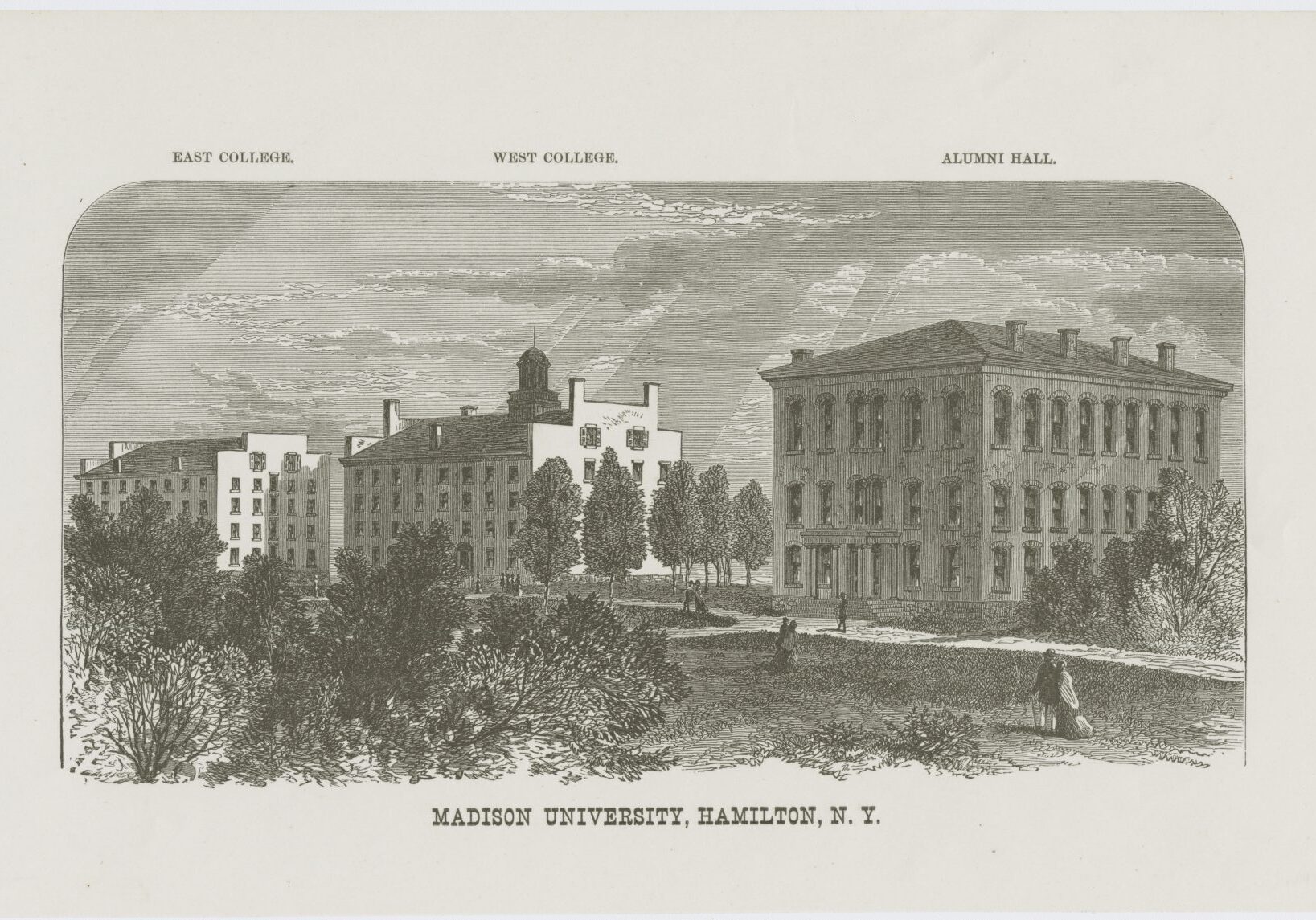The Early Years
Colgate University was founded as a seminary in 1819 and took the name, The Hamilton Literary and Theological Institution, in 1833. The Classics was an appropriate study for students training to be baptist ministers as it enabled them to understand better religious texts and to develop oratorical skills. This education served an ethical as well as an intellectual purpose. In ancient Rome, Americans found models for their own new republic. Students read Livy’s Histories, where they discovered portraits of ancient Romans, such as Cincinnatus, the virtuous citizen farmer, with whom many students could identify.
The Seminary and the Hamilton Literary and Theological Institution
Initially, the curriculum was tailored on a student-by-student basis, to account for the varied backgrounds of the first students. Latin was a requirement for admission and a preparatory language rather than a core of the curriculum. Greek, although it may have been studied prior to admission, was part of the first year curriculum. Greek was emphasized because it was the language of the New Testament and essential to the study of the Baptist faith.
Madison University
In 1829, the seminary expanded the course of study to four years. In 1839, non-ministerial students were admitted, marking the first step in the transition from seminary to university. The process was completed in 1846, when the Institution received its charter and was incorporated as Madison University. Although it was no longer a seminary, the study of classical languages still formed the backbone of the curriculum with at least half of a student’s coursework in Greek and Latin literature.
During the U.S. Civil War, enrollment experienced a sharp decline. In 1865, the university, with only fifty-six students, was less than a third of its prior size. As the university recovered from the war, there was a shift in emphasis away from Rome to Greece, a move that at the same time opened the curriculum to a wider range of courses in Greek literature as well as in social history and art. In 1873, the Classics department expanded to include new literature classes in Greek Tragedy and a course in Greek Art. Curricular changes began to occur more frequently after the war, and in the 1880s major reforms affected the curriculum and the university as a whole.
Colgate University and Major Curricular Reform In 1885, the curriculum of the university experienced a dynamic shift, instituting two separate tracks for students, the scientific track and the classical track. Classical languages, however, remained embedded in the scientific curriculum: a student who selected a scientific track was required to take either Latin or Greek for at least his first two years. But, by 1890, when Madison University was renamed Colgate University, Greek was no longer a requirement for admission. This change in policy was yet another indication that, with the expanding and more diversified curriculum of the university, the Classics had lost its earlier position of centrality.

